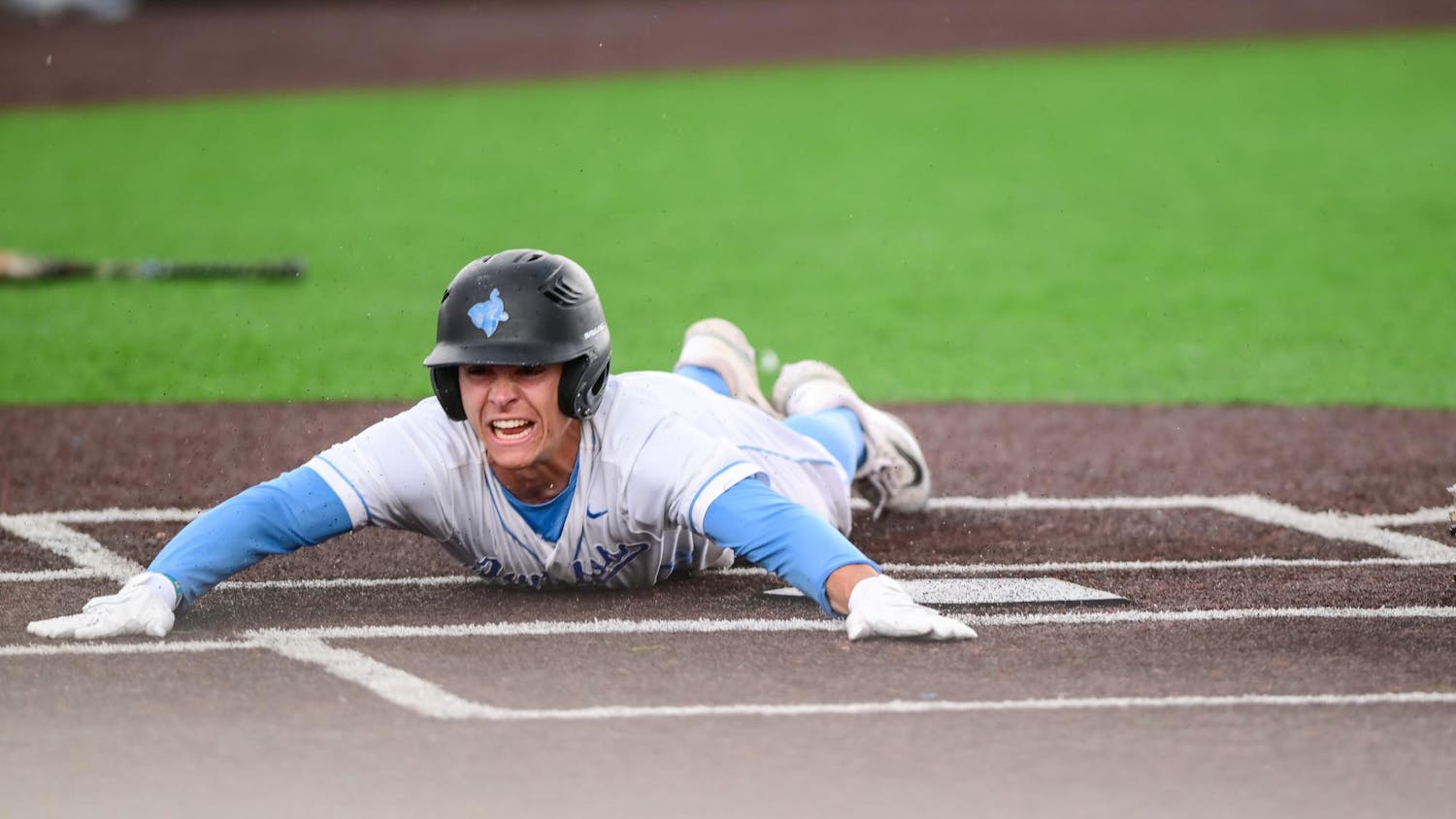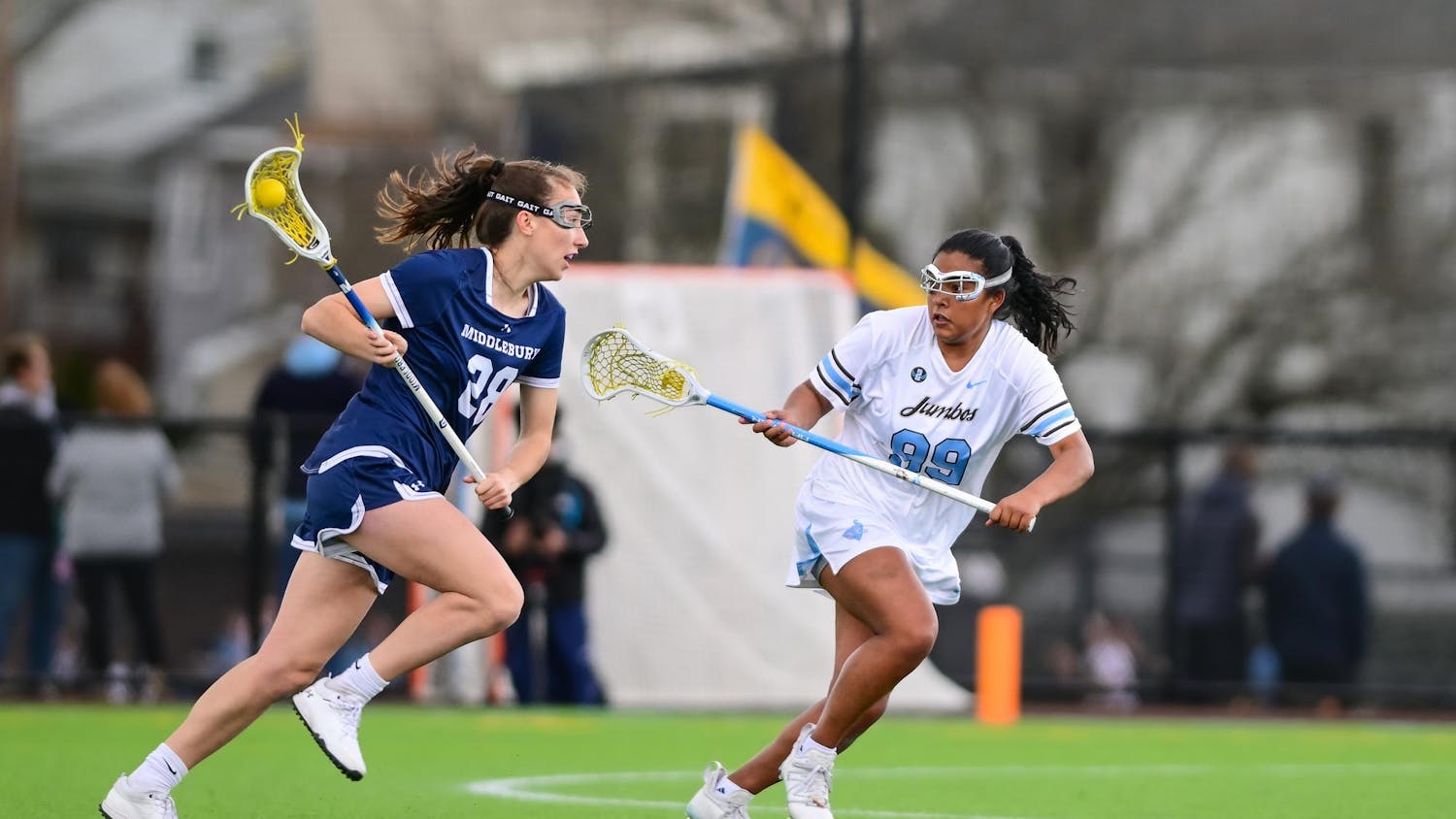If you combined the brutality of ice hockey, the explosive back-and-forth pace of lacrosse, the offensive and defensive formations of basketball and did it all while having to tread water, you'd probably still fall a bit short of water polo.
Water polo is a sport in which pure athleticism and conditioning will do you very little good. The sport takes a unique set of skills and muscle conditioning that only come after hundreds of hours in the water.
The Tufts water polo team, though not an official varsity squad, is one of the top Div. III teams in the entire country, finishing third at the national tournament last year and beginning this season 8-0. The team's dominance comes from a superior understanding of how the game is played and, more importantly, an absurd amount of conditioning that enables the athletes to execute their winning game plan. Here's a look into the team's practice habits.
It starts with the warm-up. The players dive into the pool and essentially start hurling balls around like giddy 10-year-olds trying to bash each other's faces in -- but this tenacity is normal. It helps the players develop "soft" hands, in that any pass within an arm's length becomes catchable and allows for quicker, uninterrupted passing to execute offensive strategy more efficiently.
Unlike typical practice strategies, conditioning for the Jumbo squad comes at the beginning of practice, prior to any drills or scrimmaging. It also serves, to a degree, as a more in-depth warm-up, as the players do laps in the pool in various ways. One of the most vicious warm-ups is when the players fill up a massive Poland Spring water cooler with pool water and then pour it all out while holding it above their heads and treading water, a technique equal to swinging a weighted baseball bat on a much more difficult scale.
"In the beginning [of the season] it's a lot of conditioning," senior tri-captain Pete Georgakakos said. "We swim about an hour, then do really intense leg work with weights to get everyone into shape. At this stage, after two tournaments, now we're tweaking things. Now we warm up, focus on certain fundamentals, and the rest of the time we scrimmage ... We try to gain more and more experience by playing against each other.
"[Our practices are] now mostly based off our games and what seem to be our weaknesses," he continued. "We captains meet once a week to see what we need to work on."
During practices this season, the Jumbos have focused on settling into their roles on the team in order to prevent selfishness as well as poor positioning and execution.
"A big thing that hurt us in the first tournament was a lot of guys being selfish with the ball, which made it less fun for everyone," Georgakakos said. "We're trying to get a role for everyone, to feel like they have a certain position on the team."
One man with a particularly difficult position is senior James Longhurst, a breaststroker on the swimming and diving team by trade, who is the starting goalie this year in his first season at the position. As a goalie, the most difficult aspect is not being able to use his feet to move up and down, side to side.
There is no jumping to block high shots, so Longhurst uses his powerful breaststroke kick to propel himself out of the water. This complex move not only takes a considerable amount of conditioning but also technical skill gained through weeks of intense training. Longhurst sees his success as a function of the team's overall performance, not just his individual skills.
"I enjoy seeing how the team can come together playing defense and offense at the same time," Longhurst said. "It's awesome to see the defense is doing well because I'm the goalie and it can help me. The offense can give me a big cushion and take some pressure off my back, and therefore I play better because I'm not all stressed out."
Longhurst also believes the team's strong practice habits are reflected in its success in competition.
"I think that our practice habits have a lot to do with our success," he said. "You see other teams that aren't doing the proper plays when they should be, or not countering. We work very well as a team, knowing how to pass the ball and shoot. Other teams don't drive that much -- they don't do the small things that make them good. We've got those things down so we can compete at a higher level."
As several of the team's players have extensive game experience, having played competitively prior to their arrival at Tufts, conflicting approaches to the game occasionally arise.
"[One of the struggles is] having everybody be on the same page because we really don't have a coach, so we rely on the players to coach us," Longhurst said. "We get a lot of players who have a great polo background, but sometimes they argue with each other and things don't get done. They argue over what we should be doing and what drills we should we be doing."
In the end though, the team, like any, is focused on having fun while continuing to exert dominance over the competition. In fact, as in most sports, the fun is a function of the dominance.
"We have a good balance of having a lot of fun but also getting a lot of good work done," Georgakakos said. "We just have a good mix -- we're all very good friends. Everyone's still willing to learn, but nothing stops us from teasing each other or goofing off and having fun. Otherwise, they lose their interest."





